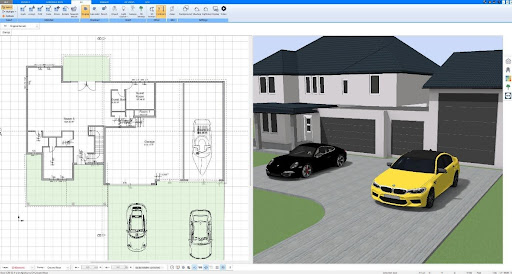You have to make peace with the idea that a fire can break out in all kinds of situations. They are one of the most expensive hazards that a commercial building can face – financially and humanely, both. A minor spark and anything flammable – even accumulated dirt – can start mayhem. It can happen when you least expect it and will spread beyond your expectations.
To protect the buildings, it is a necessary requirement to put efficient commercial fire protection systems. These systems along with fire prevention measures can help avoid a fire breaking out.
Although there are more than 300 fire safety standards developed by the National Fire Protection Association (NFPA), it will only be cheaper for you to put money into fire prevention measures. The idea is that you prepare your fire prevention arsenal and then have the renters educated on the hows, dos, and don’ts.
Table of Contents
Arming your Building
As a building owner, you need to make sure that your building is equipped enough in an unexpected case of fire. Your first line of defense is going to be the smoke detectors and sprinklers.
Each floor must have its own quota of fire extinguishers. Alongside fire extinguishers, there should be hydrants. They can manage local fires.
Commercial buildings have protocols for fire hazards. It needs emergency exits, ventilation systems, and good housekeeping. Following are some precautions.
Installing and Maintaining Fire Detection Systems
The early detection of fires is crucial. It can prevent a lot of potential damage. Hence, it is crucial to install fire detection systems.
They must provide coverage with smoke detectors and heat detectors. Also, fire alarms should be installed strategically around the building, which can go off right on time, in order for the tenants to exit the building on time.
The success of these systems depends on inspections and regular maintenance. And from success, it means the prevention of starting or spreading of the fire. Maintenance includes testing alarms, making sure that the water system of sprinklers or hydrants works and changing out the old cells, etc.
Establishing Clear Emergency Evacuation Plans
Every commercial building needs a detailed emergency exit strategy in place. This plan should contain a list of assembly sites and escape routes; along with the people in charge of organizing evacuations.
The escape routes and emergency exits should be made keeping in mind the number of potential tenants of the building. Appropriate-sized exits can avert the risk of a stampede.
A special team of people should familiarize their respective staff with the protocols and ensure a quick and well-organized response in a fire emergency.
Employees/tenants from each department should be represented on this committee, and each member should have a clear understanding of their roles and responsibilities. They must organize fire drills, supervise the servicing of fire safety systems, and raise staff awareness of fire safety.
Fire Prevention Measures
As mentioned earlier, fires can be started even on piled dirt. So, preventing a fire from starting in the first place is the priority. There are some steps that can be collectively taken to avoid fires.
- The cleanliness of the building is the top priority. The dirt must not accumulate near electric wires or a place that is prone to heat.
- The building is equipped with complex electrical grids. This electrical skeleton should have regular maintenance checks. Fuses, circuit breakers, transformers, and relays along with their circuit maps should be up to date with every check.
- Ventilation systems should be maintained properly.
- Choosing the right furniture, paint, and fire retardant finishing, can help the reduction of fires. In this situation, you can present your tenants with furniture vendors who make use of fire-retardant materials in their products.
- If a fire starts spreading, it is wise to ‘contain’ it in the room where it began. This should give enough time for the residents of the building to evacuate the building and for firefighters to arrive.
You cannot eliminate the risk of fires. Although it can be managed through regular inspections and maintenance checks. It is what they say, prevention is better than cure. Terrible tales of caution, like the multiple-time burning down of Glasgow School of Art, should encourage you to have your fire safety on point. Bringing in fire doors Scotland-based specialists to do regular inspections is key.
The fire-damaged property does bag a check out of your pocket. So it is better to be careful.





